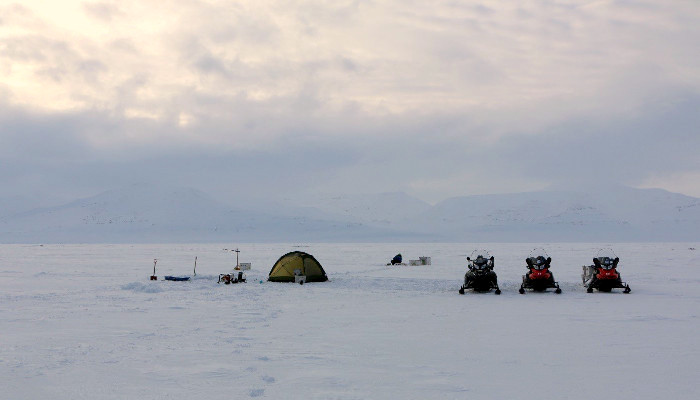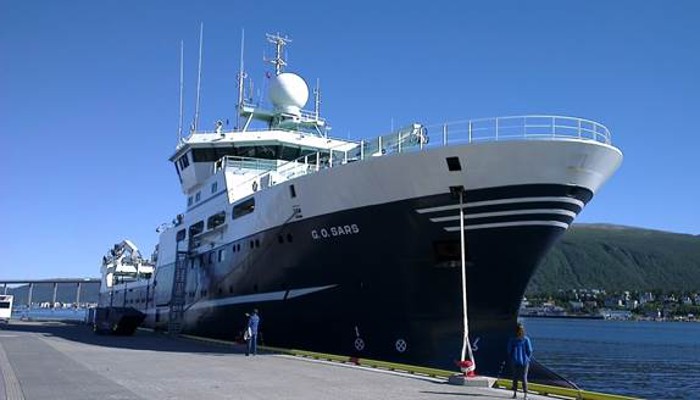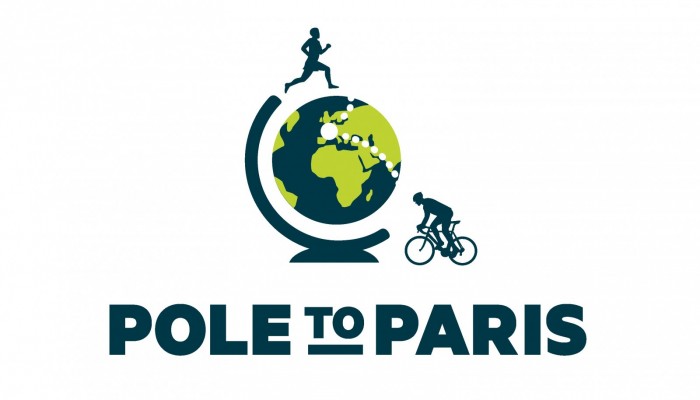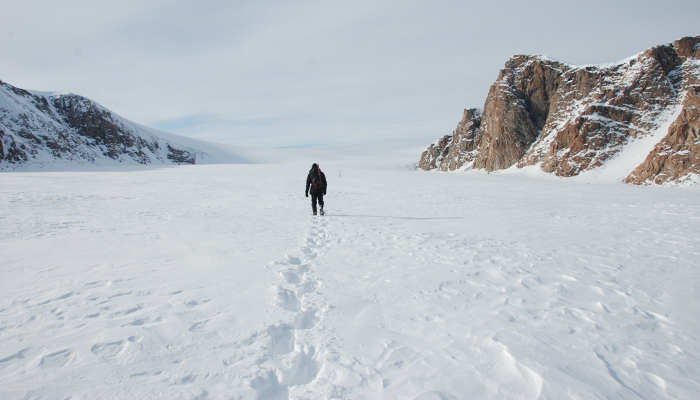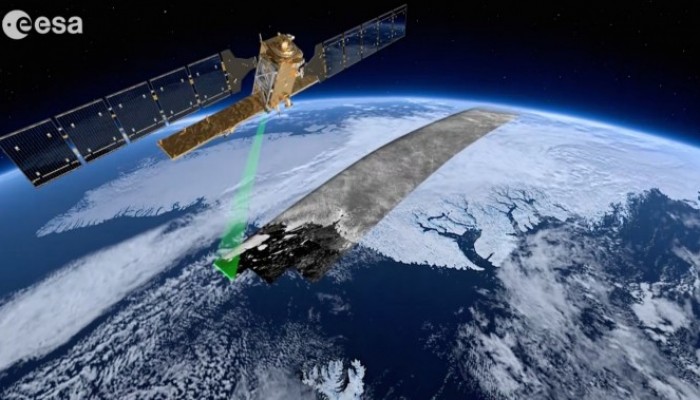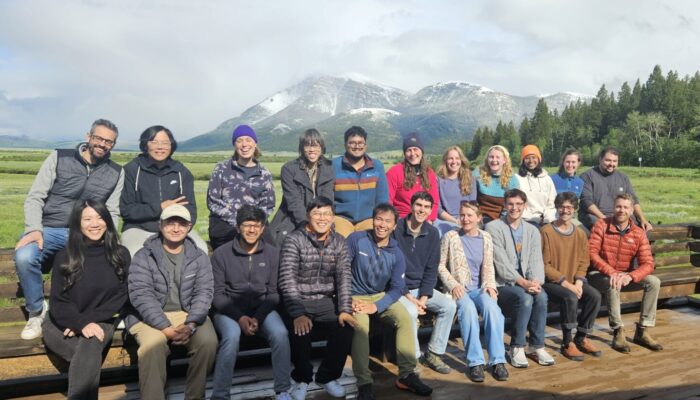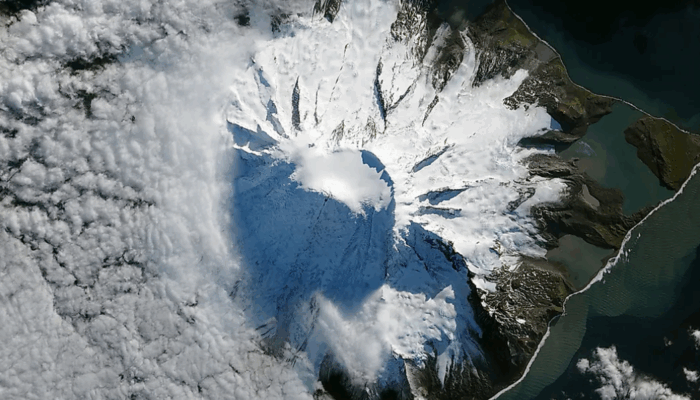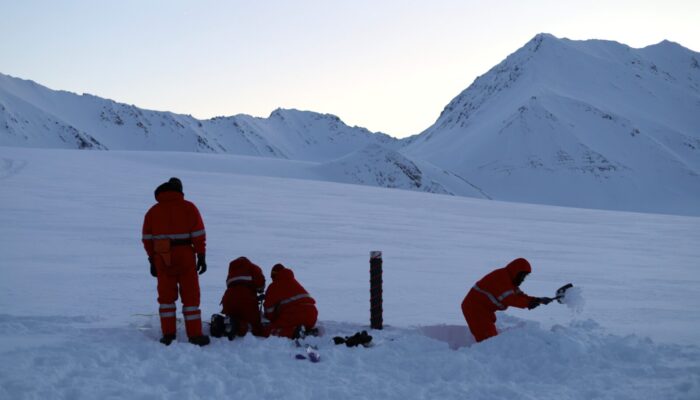Have you ever wondered how results from scientific studies make their way into policy and influence government decisions? Read about the experiences of Sammie Buzzard, University of Reading, who spent her summer working for a government body in Westminster, London, UK. This summer I had the opportunity to take some time away from my usual Ph.D. work and spend 3 months working for the Government Of ...[Read More]
If you didn't find what you was looking for try searching again.
Cryospheric Sciences
Camping on the Svalbard coast
In early April 2015, a small team of 2 Belgian and 2 French researchers went to Svalbard. The goal? Testing new methods to measure sea-ice thickness and ice algal biomass, but also measuring greenhouse gases in the sea ice in relation with the ‘STeP’ (Storfjorden Polynya multidisciplinary study) campaign. With funding from the French Polar Institute (IPEV) and IPSL and logistical arrangements by t ...[Read More]
Cryospheric Sciences
Cruising for mud: Sediments from the ocean floor as a climate indicator
Going on a cruise for a month sounds tempting for most people and that is exactly how I spent one month of my summer. Instead of sunshine and 25 degrees, the temperature was closer to the freezing point on the thermometer and normal summer weather was replaced by milder weather conditions. The destination of the cruise was the western Nordic Sea and the east Greenland Margin. The ice2ice cruise wa ...[Read More]
Cryospheric Sciences
From the Poles to Paris — An interview with Erlend Moster Knudsen
What do polar bears and emperor penguins have to do with the Eiffel Tower and Notre Dame? Pole to Paris has the answer. Erlend Moster Knudsen earned his PhD in climate dynamics after four years of research from the University of Bergen, Colorado State University and University of Alaska Fairbanks on Arctic sea ice and its interaction with atmospheric circulation. He took some time to answer ...[Read More]
Cryospheric Sciences
Only extremes – Babis Charalampidis
– In fieldwork, you have no average. You just have extremes. When Daniel spoke his mind out loud we were facing a bright sunny day coming in from the opening of our tent. We were very glad to see that and ready to engage with our glaciological tasks. Our camp site was at the immediate fore field of the A. P. Olsen ice cap in Northeast Greenland. We had arrived there the previous evening and ...[Read More]
Cryospheric Sciences
Around the Poles in approx. 100 minutes: Earth Observation for Climate Science and the Cryosphere – Anna Maria Trofaier and Anne Stefaniak
Everyday we come into contact with technology that has changed the way we work, live and even think. Yet it is still easy to forget how integral satellite technology is to our daily lives; over two thousand artificial satellites currently orbit our planet – satellites for navigation, for telecommunication, for meteorology, and for environmental and climate monitoring. The latter two categori ...[Read More]
Cryospheric Sciences
Geysers, Geese, and Graph Neural Networks: Impressions from the Glaciology in Machine Learning Summer School (GlaMacLeS)
An isolated, idyllic, and inspiring setting in the gorgeous Centennial Valley of Montana, where nothing pulls your attention from the task ahead, a motivated group of PhD students and postdocs in glaciology, and five energetic lecturers: the perfect combination for tackling the ambitious challenge of exploring the interface between glaciology and machine learning. Who wouldn’t learn well here, esp ...[Read More]
Cryospheric Sciences
Heard Island Glaciers Are Shrinking Faster Than Ever! Here’s what you need to know.
In this blog post Dr Levan Tielidze from Monash University and Securing Antarctica’s Environmental Future shares insights from a new glacier assessment of Heard Island. Although rarely visited and largely unknown, Heard Island plays an outsized role in understanding how the Southern Ocean cryosphere is responding to global warming. The island is one of the few sub-Antarctic locations with active g ...[Read More]
Cryospheric Sciences
Cryo Adventures – Discovering the beauty of polar winter
Only one month after starting my PhD, I found myself in a tiny plane flying over one of the most beautiful and breathtaking landscapes I’ve ever seen. I was on the way to the northernmost settlement in the world – the research village Ny-Ålesund. What I expected from the trip: cold temperatures, darkness, and lots of snow. What I found instead: stunning views, magical colors, friendly people, and ...[Read More]
Cryospheric Sciences
Did you know: Soot is a melting agent for glaciers in Peru and China
Mountain glaciers are melting rapidly due to global warming. This process is being intensified by increasingly extreme natural events, such as forest fires and air pollution from human activities. One of the main culprits is a tiny but powerful pollutant called black carbon (commonly known as soot) which darkens the surface of the snow and makes it met faster under the sun. But how much of this po ...[Read More]

